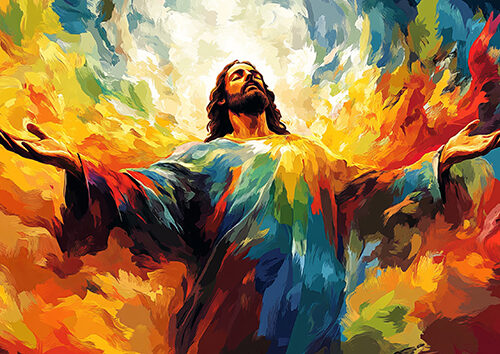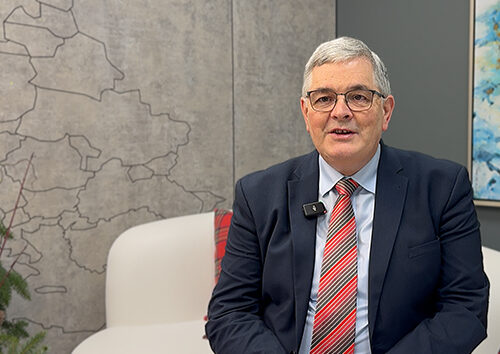24 November 2023 | St. Albans, UK [David Neal]
In his story The Visit about Christ’s life, death, resurrection and return, J. B. Phillips imagines two angels talking, one senior and one junior, watching the events from interstellar space and in compressed time. As they reach the story’s end, the junior angel asks impatiently, “How does it end?” “We simply do not know,” replied the senior angel. “It is in the Father’s hands. Sometimes, it is agony to watch, and sometimes it is joy unspeakable. The end is not yet.”
As the media reports the current wars between Russia and Ukraine or Israel and Hamas, the images of destruction shock and disturb. That one missile can demolish a tower block in one strike beggars belief. As the BBC’s Chief International Correspondent described in one of her many reports from ‘the front line’, “Images which we thought confined to history are on our screens again.”
But what stirs the emotions more than any other is not only seeing images of dead and injured people, but the raw emotion of adults and children crying hopelessly and uncontrollably – in the middle of the chaos and destruction. If it is difficult for armchair spectators to watch, the line from The Visit, expressing the perspective from heaven, “Sometimes, it is agony to watch”, speaks volumes of what God must experience.
That one day ‘war will come to an end’ is the hope of the Chrisitan. The biblical hope is that there will be a time, at the Second Coming of Christ, when He put an end to all war. Mentioned 318 times in the 260 chapters of the New Testament, “this teaching occupies one in every twenty-five verses from Matthew to Revelation.” (1)
Revelation 21:1-6 describes the vision John the Apostle saw about the total renewal of the planet – leading to a time when there will be no more tears. Before we talk further about the war – as I believe it to be important that we do, watch this engaging video produced by the Bible Society – brimming with hope that one day, on this planet we call Earth, war will be gone forever!
War in the 20th Century
It is estimated that during the 20th century, the total number of deaths caused by or associated with war was 187 million. From 1914 onwards, the century continued with few “periods without organised armed conflict somewhere.” And “dominated by world wars: that is to say, by wars between territorial states or alliances of states.”(2)
The first 22 years of the 21st century recorded different kinds of wars – terrorism, ethnic conflict, and civil wars, with tens of thousands of lives lost each year. (3)
- Second Congo War (1998-2003)
- Syrian Civil War (2011 onwards)
- Darfur Conflict (2003-2008)
- Iraq War (2003-2010)
- Afghanistan War (2001-2016)
- The War Against Boko Haram (2002 onwards)
- Yemini Civil War (2011 onwards)
- Russia – Ukraine War (2014 – 2015)
While a cease-fire between Russia and Ukraine was signed in February 2015, the war reignited in February 2022 and continues to this day.
The Israel and Palestinian Conflict
On 7 October, the terrorist group Hamas – with its charter that calls for the destruction of Israel, killed 1,200 Israeli citizens and took 240 hostages, according to the latest BBC report dated 24 November (a massacre similar in type to some committed during the Rwandan genocide of 1994 – observed one journalist). The tragedy is that Hamaz was either ignorant of – or did not care – that those targeted in the Kibbutz area of southern Israel were the ‘peace warriors’, the ‘peaceniks’ challenging their government to find a resolution other than through military conflict.
Following the October attack, “Israel responded with air strikes on Gaza, and launched a ground offensive. More than 14,800 people have been killed in Gaza, according to the Hamas-run government”, quotes the same BBC article. (4) At the time of writing, there was a pause in the fighting while a number of hostage exchanges took place.
According to the United Nations Office for the Coordination of Humanitarian Affairs (OCHA), in an ongoing ‘Data on Casualties’ report, since 2008 and up until 7 October 2023, the number of Palestinian fatalities was 6,621, and 156,227 injuries. The number of Israeli fatalities was 311, and 6,338 injuries. The report explains its verification process to support the accuracy of its data. (5)
Whataboutery
There is a term in the Oxford English Dictionary that is little used but often practised – particularly in an attempt to win the information war during a conflict. It is “the technique or practice of responding to an accusation or difficult question by making a counter-accusation or raising a different issue.” (6) It is easy to spot as the media spokesperson for either side is challenged to justify the military strategy.
Lindsey Abston Painter, in her article Brothers at War, clarifies the current crisis’s justice. “Do not listen to one side when they tell you that the state of Israel is the bad guy and the Palestinians get a pass for any abhorrent behaviour because it’s justified. It’s not that simple. And do not listen to the other side when they tell you that the Palestinians are the bad guys and Israel gets a pass for any abhorrent behaviour because it’s justified. It’s not that simple.” (7)
It would be easy to dismiss Painter’s point. Some reading this will be distressed. “How can you be impartial”? In response, “It’s not that simple.”
A couple of events from my own experience may help understand this position:
St. Albans – Yom Kippur 2002
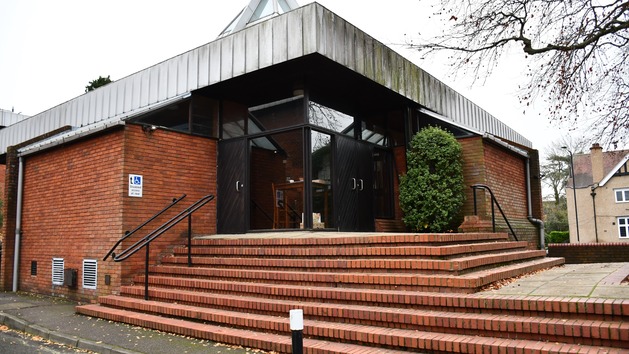
Monday, 16 September 2002, was Yom Kippur. For this significant occasion in the Jewish calendar, a small Jewish community met in the St. Albans church adjacent to the Trans-European Division office. Even though the city of St. Albans had a ‘United Synagogue’, this group, for whatever reason, did not wish to unite with the main body of believers. Having no place to worship, the local Adventist congregation invited them under a hire agreement to set up their ‘portable tabernacle’ in the church. It meant a lot to the small Jewish community to connect with God on this, their most important and soul-searching day of the year.
I needed to call in at the church on this particular Monday morning. I was the local pastor and had left my bible in the foyer while greeting members after worship the previous sabbath. On arrival, I noticed the church open with people entering through the front doors. I remembered – it was Yom Kippur and that the Jewish community were in the building for the day.
As I walked briskly up the church steps, my intent was to enter and exist as quickly as possible so as not to disturb our Jewish friends and their worship. As I reached the top of the steps, I encountered a large gentleman dressed in a full leather overcoat wearing dark glasses. Before I could take a step further – he put out his hand with a ‘go no further’ signal.
“Who are you…?” he asked abruptly.
Taken aback, but with a wry smile, I said: “I am the pastor and one of the keyholders of this church, and I have just come to collect something I need.” His mood immediately changed, and he smiled warmly with relief. “Come in, my friend – you are most welcome”.
At that moment, and for the first time in my life, I understood what freedom to worship without fear is about. Almost one year earlier, give or take a few days, the destruction of the Twin Towers’ had occurred in New York. The age of the ‘fanatical Muslims’ had arrived, and in the immediate aftermath began the ‘global war on terror.’ The message they carried – “All non-Muslims are infidels unless they agree to live according to Shariah law… and if they don’t…”, the sentence ended with words unrepeatable here. And, of course, we need to constantly remind ourselves of the metaphorical distance of a million miles between ‘fanatical Muslims’ and Muslim neighbours who are our friends.
Northern Ireland – 2005 to 2016

From the autumn of 2005 until the spring of 2016, I lived in Northern Ireland, a disputed terriorty. Prior to living there, I viewed the historic conflict (1968 – 1998) as an armchair spectator, with an uncritical attitude toward ‘those seeking liberation from an oppressive power’. They were guaranteed my sympathy, reinforced by a Christian ethic to support the perceived ‘underdog’, the poor, the abused, the distressed, and those treated as second-class citizens. As I viewed the problem it wasn’t complex but a black and white issue.
For much of the 20th century, the ruling Protestant Unionists had treated Northern Irish Catholics in ways not dissimilar to Apartheid South Africa. At the same time, on both sides of the divide are beautiful and kind people wanting to live in peace with ‘the other’.
From the Protestant perspective, Northern Irish Catholics, along with their counterparts in the Republic of Ireland didn’t speak the Queen’s English (couldn’t speak properly), couldn’t be trusted (were liars), were irresponsible in having children (they couldn’t afford to raise), and worst of all, they were – papist! And if anyone thought Unionists were going to surrender being governed by the Queen of England, to a rag-tag papist government in Dublin – the two words they wanted the world to hear in the loudest of terms was – “No Surrender”! Quite simply, Unionist rhetoric confirmed all my prejudice. Who were the perpetrators, and who were the victims was as clear as night is from day. That was until I met someone we shall call Jane.
Jane’s Mother
Jane came from a Protestant family, and confirmed the truism that when a war takes place, everybody knows someone affected, and this was certainly the case in Northern Ireland. Jane’s mum – once upon a time, had a brother.
On 5 January 1976, near a village in the south of County Armagh (known by locals as bandit country), gunmen stopped a white Ford Transit minibus carrying eleven Protestant workers. They ordered them to get outside of the van, lined them up alongside it – and shot them. The brother of Jane’s mother was one of those workmen – a painter and decorator. Only one victim survived despite having been shot 18 times. A Catholic man on the minibus was allowed to go free. Those responsible phoned a news agency and said the shooting was retaliation for a string of attacks on Catholic civilians in the area by Loyalists, particularly the killing of six Catholics the night before. The Kingsmill massacre (as it came to be known) was the climax of a string of tit-for-tat killings in the area during the mid-1970s and was one of the deadliest mass shootings of the Troubles. To this day, the perpetrators have never been brought to justice, and Jane’s family, a generation on, continue to bear the pain and scars of the event. (8)
Two stories from St. Albans and Northern Ireland. As the local Jewish community contemplated the meaning of Yom Kippur, they feared being blown out of existence by a terrorist. A conspiracy theory, perhaps? Sadly not. The deadly evidence is scarred on the hard drive of their memory, never to be erased. Adolf Hitler was his name. And there are still people in this world who no longer want Jews to exist. If you are a Jew, how do you live day to day with that existential reality? Jane’s family in Northern Ireland are not the only ones to live with unanswered questions about loved ones taken suddenly and unjustly as a result of the bullet.
Such stories up close and personal – not distant and remote through a screen – cause us to think again about the ‘just cause’ of one side or the other.
“Terror is the epitome of idolatry. Its language is force, the principle to kill those you disagree with. That is the oldest and most primitive form of conflict resolution. It is the way of Cain. If anything is evil, terror is. In suicide bombings and other terrorist attacks, the victims are chosen randomly, arbitrarily and indiscriminately. Terrorists, write Michael Walszer, ‘are like killers on a rampage, except their rampage is not just expressive of rage or madness; their rage is purposeful and problematic. It aims at general vulnerability: Kill these people in order to terrify those.” (9)
Gaza
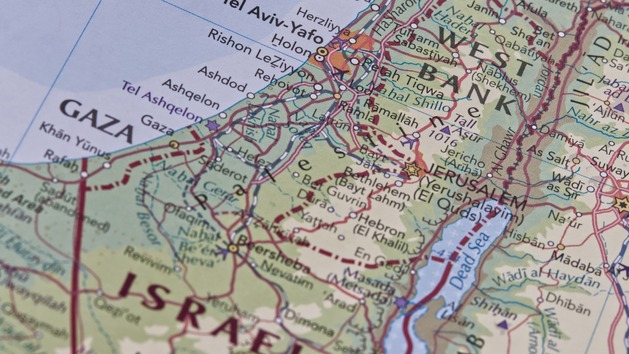
I heard it on the radio this morning. “We’ve got the evidence”, said the Israeli spokesperson. “We have discovered the Hamas headquarters under the al-Shifa hospital.”Why are you in the West and the UN not reporting this?” The BBC interviewer Mishal Husain responded by raising the issue of ‘proportionality’. “Don’t we have the right to protect our citizens?” the Israeli spokesperson quickly replied. In a 19 November Sunday Times commentary, Lawrence Freedman framed the Israeli response as “only acting to protect its civilians, and that the impact of the war on Palestinian lives is the direct result of Hamas’s attacks and its disregard for its own people by turning a territory it was supposedly governing into an armed base.” And Freedman too raises the question of proportionality, “Can the gains in Israeli security justify the civilian toll?” Who of us can forensically and without emotion measure that?
Proportionality and a Biblical Perspective
Dare we pray today for both the ‘Peace of Jerusalem’ (Psalms 122:6) the peace of Gaza, and we might add the West Bank? Is it a righteous action to be ‘pre-emptive’ and not passive? Has Israel, with its miles superior military capability and being the only democratic government in the Middle East, acted consistently humanely towards the Palestinians? The same question is asked of the British in the 1940s in the setting up of the state of Israel. This reflection does not have the space to give the incredibly complex historical perspective. Indeed, the critical question this conflict raises when considering its historical perspective is, “Where do you start”?
But when we think about everyday life in Gaza and Israel today, what do we see?
- Israeli citizens live with compounded fear. Last May, while briefly visiting Jerusalem, I watched primary school children get off the bus. As they stepped off the bus, they were met by a man – nothing unusual about that – but secured to his waist was a revolver to protect them from a terrorist attack. Outside of Israel across the globe, Jews continue to face verbal abuse both in person and online.
- How long must the 2.3 million citizens of Gaza, confined to a space similar in size to the Isle of White (an off-shore UK island), continue to live in poverty with goods, services, and movement controlled by the surrounding nation? With literally no escape, and literally ‘walled-in) socio-economic improvement is virtually non-existent. Human rights recognised by the United Nations are suppressed. In the best of times, health care in the territory is basic by Western standards (and in stark contrast to that of the surrounding nation). We also cannot begin to imagine the psychological condition of everyone living in such an environment.
The call of the UN and the West is for Israel to make a ‘proportionate response’. But Israel is raging. Because not for the first time, its very existence is questioned. Their response is a ‘mighty vengeance’ because Judaism believes that for justice to be done, it requires ‘punishment equal in kind to the offence’.
“But if there is harm, then you shall pay life for life, eye for eye, tooth for tooth, hand for hand, foot for foot, burn for burn, wound for wound, stripe for stripe. When a man strikes the eye of his slave, male or female, and destroys it, he shall let the slave go free because of his eye. If he knocks out the tooth of his slave, male or female, he shall let the slave go free because of his tooth.” (Exodus 21:23–27 ESV)
The Bombing of Dresden & Proportionality
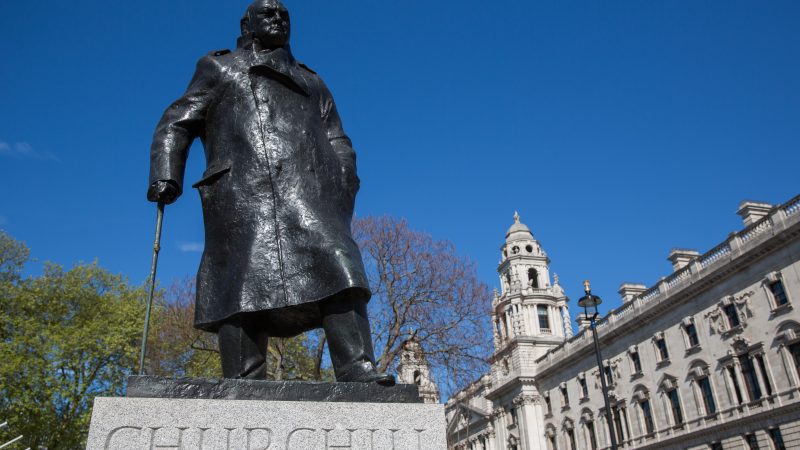
One late afternoon a few weeks ago, while driving through the Oxfordshire UK village of Bladon, and listening to the BBC News, the radio presenter once again raised the matter of ‘proportionality’ in response to the Israeli bombing and ground invasion of Gaza. At that very moment, I passed the local Parish Church where Winston Churchill was buried. It was the perfect reminder that Churchill faced the same problem, particularly in the closing months of WWII.
“On 13 February 1945, British aircraft attacked the German city of Dresden. In the following days, they and their US allies would drop nearly 4,000 tons of bombs in the assault. The ensuing firestorm killed 25,000 people, ravaging the city centre, sucking the oxygen from the air and suffocating people trying to escape the flames. Dresden was not unique. Allied bombers killed tens of thousands and destroyed large areas with attacks on Cologne, Hamburg and Berlin, and then we remember the Japanese cities of Tokyo, Hiroshima and Nagasaki.
But it was the bombing of Dresden that history questions as excessive. As Winston Churchill expressed in a memo immediately after the attack: “It seems to me that the moment has come when the question of bombing of German cities simply for the sake of increasing the terror, though under other pretexts, should be reviewed,” he wrote in a memo.“The destruction of Dresden remains a serious query against the conduct of Allied bombing.” (10)
The Role of Religion
Religious Studies scholar Jeffery Burton Russell says, “It is a reality that religious belief, past and present, has been at the root of many a war, but such conflicts”, he continues, “may not be rooted strictly in religion and instead may be a cover for the underlying secular power, ethnic, social, political, and economic reasons for conflict.” (11)
The late and former UK Chief Rabbi Jonathan Sacks, in his book ‘Not in God’s Name – Confronting Religious Violence”, goes further and demolishes the idea of the holy war.
“No soul was ever saved by hate. No truth was ever proved by violence. No redemption was ever brought by a holy war. No religion won the admiration of the world by its capacity to inflict suffering on its enemies. Despite the fact that these things have been endorsed in their time by sincere religious believers, they are a travesty of faith, and until we learn this, religion will remain one of the great threats to the peace of the world.”
Sacks goes on to note with great insight:
“The crimes of religion have one thing in common. They involve making God in our image instead of letting him remake us in his. The highest truth does not cast its mantle over our lowest instincts – the search for power, the urge for conquest, the use of religious language to spread the aura of sanctity over ignoble crimes. These are forms of imperialism, not faith.” (12)
Peacemaking

As a faith community, Seventh-day Adventists do not “view any country as a nation of villains, but rather see them as people for whom God’s Son, Jesus Christ, died” and are committed to praying for all connected with conflict and war.” As conflicts develop which look helpless to resolve, their wish is to “offer healing and be responsive to those whose lives have been shattered wherever they are… an integral part of our calling.” Where necessary in the context of conflict, Adventists are encouraged to recognise the need for peacemaking, “to take an active role in making and sustaining peace, thus being part of the solution rather than the problem.” (13)
A War We Have Heard Little About
Between 2020 and late 2022, the conflict in Tigray, East Africa, has led to a devastating toll of 600,000 lives lost. To grasp the magnitude of this tragedy, it is comparable to the entire population of either the UK cities of Bristol or Glasgow perishing. And we have heard very little! (4) I add that not just as an aside to be noted, but to try and imagine the horror that has gone by largely unnoticed by most of the world. How did we not notice? (14)
Working through the complexity of the current crisis between Israel and the Palestinians, I wonder if we can we ever arrive at an intelligent and godly judgement about what is going on? The conclusion I have arrived at, at least for the moments, is perhaps best explained in a few lines from the Leader Comment of the UK Church Times:
“In the scriptures, Hebrew as well as Christian, God created all things and loves all things, and laments the death of all, looking at them with eyes of infinite knowledge and infinite mercy, without which no true judgement can ever be made.” (15)
And while it is the heartfelt and prayerful cry of every Christ follower to plead, Lord Jesus, come quickly, Angel Tilbly suggests that ‘in times of crisis prayer needs some active verbs, some genuine calling on God…”
“Merciful and mighty God, send down your power from high to quench the rage of war. Burn up the fuel of aggression, destroy all lying tounges, suppress the profits of violence, and because no one is without sin, unveil our own complicity. Bear up the broken and defend them under the wings of your protection, and send strong peace that comes from above to heal all wounds, releive all griefs, and set all peoples free, in Jesus Christ our Lord. Amen.” (16)
1. Christianity Today, The Biblical Certainty of Christ’s Return, by Robert Lamont, 1964. 2. The Guardian, War and Peace, by Eric Hosbaum, 23 February 20o2. 3. Britannica, 8 Deadliest Wars of the 21st Century, by Michael Ray. 4. The data on casualties since October 2023 from the BBC news online, What is Hamas and Why is it Fighting with Israel in Gaza? 24 November, 2023. 5. The data on casualties since 2008 from the United Nations Office for the Coordination of Humanitarian Affairs (OCHA). 6. The Oxford English Dictionary online. 7. Adventist Today, Brothers at War: why you should avoid simple answers about the Israel-Gaza conflict, by Lindsey Abston Painter, 12 October 2023. 8. BBC News online, On This Day, 5 January. 9. Not in God’s Name, by Jonathan Sacks, Hodder & Stoughton, 2016. 10. BBC News online, Dresden: The World War Two bombing 75 years on, by Toby Luckhurst, February 2020. 11. Wikipedia, Religious War. 12. Ibid, Jonathan Sacks. 13. Principles extracted from the General Conference statement concerning the 2003 War in Iraq. 14. The Guardian, Think the war in Ukraine is the world’s deadliest conflict? Think again, 28 December 2022. 15. Church Times, Leader Comment, No Restraint, 10 October 2023. 16. Church Times, 11 March 2022, Angela Tilby column.
[Photos: Shutterstock (Israel map, and Winston Churchill statue). All others, David Neal]

